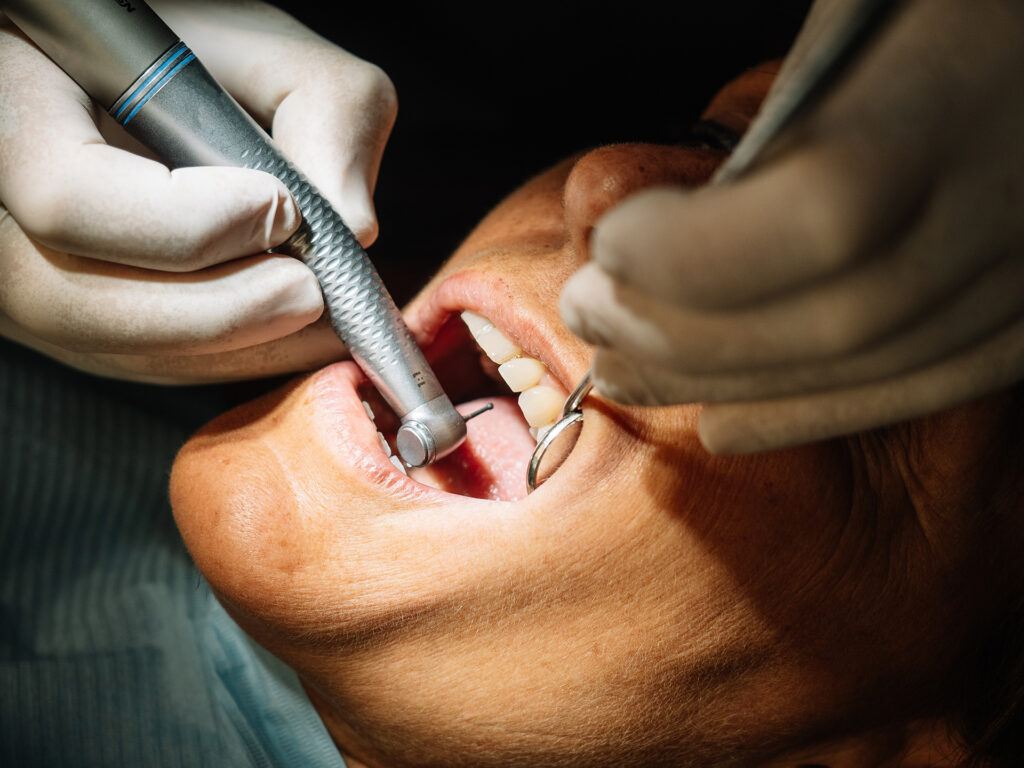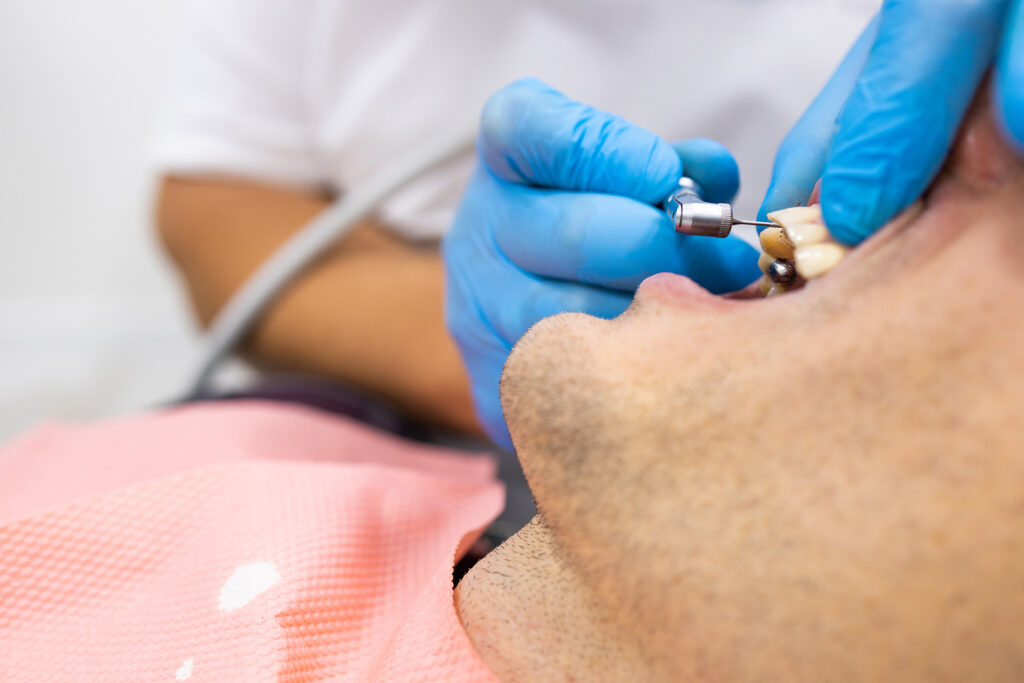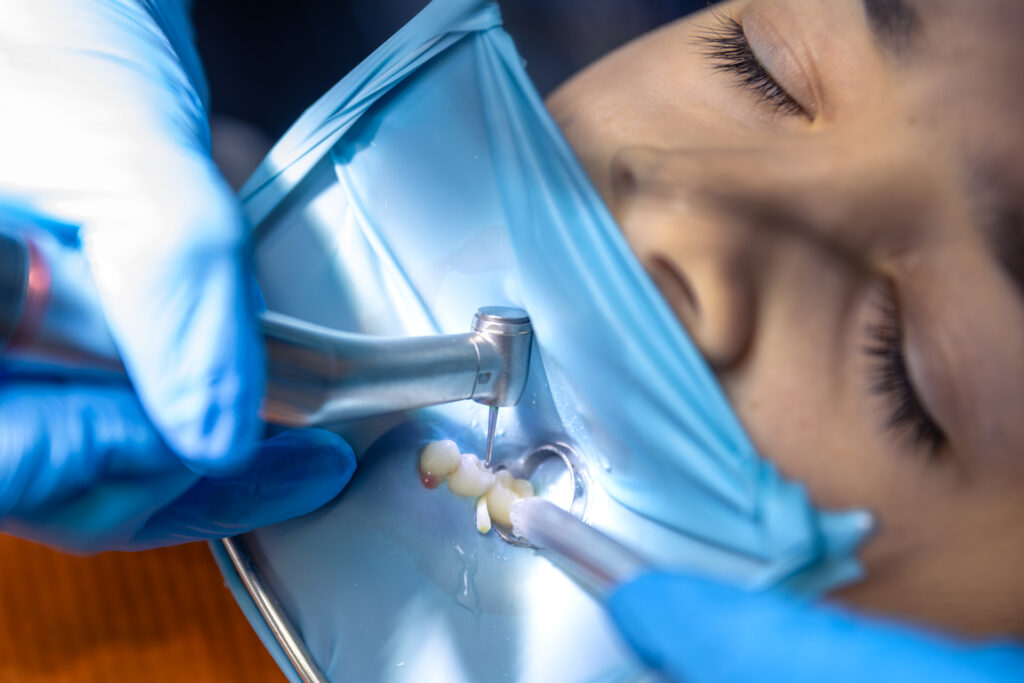Tooth decay doesn’t always announce itself with pain or sensitivity. In many cases, it’s your dentist who first spots the early signs during a routine check-up. That’s where dental fillings come in. One of the most common procedures in general dentistry, a tooth filling helps restore the structure of a tooth that has been damaged by decay or minor trauma.
What is dental filling treatment really about? A dental filling is a common dental procedure used to restore a damaged tooth. In short, it involves cleaning out the decayed portion of a tooth and replacing it with a restorative material to reinstate function, aesthetics and structural integrity.
A tooth cavity is a primary reason for needing a dental filling. The tooth filling process typically includes examining the tooth, removing decay, preparing the area, placing the filling material, and polishing the restoration. With regular care, a well-placed filling can last many years and save you from more complex dental work in the future.

What Is A Dental Filling
A dental filling is placed to restore teeth to function and appearance after trauma, caries removal or tooth wear. Left untreated, decay can progress deeper into the tooth, resulting in a decayed tooth that can lead to infection, pain, or even tooth loss if not treated properly. Fillings act as a barrier against further decay and help restore your bite and smile.
Good oral hygiene is essential, but even the most diligent brushers can get cavities. That’s why early detection and treatment are key. Regular dental visits allow your dentist to identify areas of concern early and recommend a filling before more invasive procedures are needed. Early intervention, combined with routine check-ups, can help prevent the need for further treatment.

Choosing the Right Tooth Filling Material
Choosing the right tooth filling material depends on several factors, including the location and size of the cavity, aesthetic goals, durability and budget. Back teeth, which experience more chewing pressure, may benefit from durable options such as amalgam or ceramic. For front teeth and visible areas, composite resin or porcelain fillings are a better option.
Tooth-coloured fillings are a popular choice for patients who prioritise aesthetics, as they blend well with the natural colour of their teeth. While amalgam is the most cost-effective, ceramic and composite materials offer additional aesthetic benefits and are stain-resistant. Your dentist will take all these factors into account, such as appearance, longevity and sensitivities or allergies, when helping you choose the best option. Regardless of the material, a well-placed filling will restore function, seal out bacteria and preserve your natural tooth structure.

Amalgam Fillings
Amalgam fillings are made from dental amalgam, a material composed of a blend of metals including silver, tin, copper and mercury. Dental amalgam has been used for over a century and is known for its durability, making it once a popular choice for back teeth where chewing forces are strongest. Amalgam fillings are cost-effective, but their silver appearance makes them less suitable for front teeth compared to tooth coloured options. However, due to patients’ concerns about mercury content, we no longer place amalgam fillings at TEETH @ Tiong Bahru, although they are considered safe by most regulatory bodies.
Composite Resin Fillings
Composite resin fillings are made from a blend of plastic and glass particles, known as composite resins, and are colour matched to your natural teeth. Composite resins are valued for their durability, resistance to fracture and lower potential for staining compared to other materials. This makes them ideal for visible areas, such as the front teeth or more minor restorations in the back teeth. Composite fillings bond directly to the tooth, providing strong support and aesthetic appeal. This is our preferred recommendation for most patients at our dental clinic TEETH @ Tiong Bahru.
Ceramic Fillings
Porcelain fillings, a type of ceramic filling made from porcelain or other ceramic materials, are both strong and stain-resistant. Porcelain fillings are custom-made to match the patient’s natural tooth colour, providing excellent aesthetics and durability. This makes them a preferred option for patients who want a long-lasting restoration that blends seamlessly with the surrounding tooth colour. They are often used for larger cavities or when replacing older fillings that are failing.

Direct vs Indirect Fillings
Direct fillings, such as composite or amalgam, are placed directly into the cavity and hardened in one appointment. Indirect fillings, including inlays and onlays, are fabricated in a dental lab and then bonded to the tooth in a subsequent visit. These are used for more extensive decay where a standard filling wouldn’t provide sufficient strength to the tooth.
What to Expect During a Filling Procedure
TEETH @ Tiong Bahru’s professional team of dentists will discuss all the pros, cons and costs of your treatment needs. If dental fillings are required, they will usually be under local anaesthesia. This is a numbing agent for the tooth or area in question. Our clinic always applies a surface numbing gel before giving the local anaesthetic injection to give almost pain-free analgesia. If you have any concerns regarding analgesia, please do let us know so that we can make the experience as anxiety-free as possible.
Our dentist will then prepare your tooth for the filling. This means removing any decay or debris with dental drills and hand instruments. You won’t feel any pain, but you may experience a slight vibration during the drill procedure.
Tooth-coloured dental fillings involve several stages and require a clean and dry tooth. The dentist will apply an etching gel, which is washed off after a waiting period. Then, a bonding layer is applied and ‘set’ with a light-curing machine. Lastly, the filling is placed in layers and set as it goes. It is then polished, and the bite is checked. It is ready to use right away. However, it is always advisable to wait until the numbing agent wears off before eating or drinking.

Chipped Tooth Repair: When a Filling Isn’t Enough
A chipped tooth is a common dental issue that can cause discomfort, especially when eating hot or cold foods. While fillings are often used to repair minor chips and restore the tooth’s function, sometimes a simple filling isn’t enough. If the chip is large or if the tooth is significantly weakened, your dentist may recommend a dental crown or onlay to restore the tooth’s strength and natural appearance fully.
These options offer more comprehensive coverage and protection than a standard filling, helping to prevent further damage to the tooth. Regular dental check-ups are crucial for detecting chipped teeth early, enabling prompt treatment and minimising the risk of complications. If you notice a chipped tooth or experience sensitivity, don’t wait. Seeking timely care can help preserve your teeth and maintain a healthy smile.

Alternatives to Fillings
In some cases, a simple filling may not be adequate. If the tooth structure is severely compromised, your dentist may recommend an inlay, onlay or crown. These options provide more coverage and strength and are typically fabricated in a dental lab. Inlays and onlays sit within or over the cusp of the tooth, respectively and are a middle ground between fillings and crowns. Crowns cover the whole tooth and are used when a tooth is severely damaged. Your dentist will assess your case to determine the best treatment.

Caring for Filled Teeth
Once a filling is placed, maintenance is key to extending its life. Good oral hygiene is essential. Brush your teeth twice a day with fluoride toothpaste, floss daily and attend regular dental check-ups to ensure the longevity of the filling and your overall dental health.
Avoid biting into complex objects, such as ice or pen caps, which can chip or dislodge fillings. If you grind your teeth at night, your dentist may recommend a night guard to protect your restorations. Using a soft-bristled toothbrush and employing a gentle brushing technique can help reduce wear and tear on your teeth and maintain the health of your gums.

Dental Filling Maintenance Schedule
Maintaining your dental fillings is just as important as caring for your natural teeth. To keep your fillings and tooth structure in top condition, practice good oral hygiene every day.
Brush your teeth at least twice a day with fluoride toothpaste and floss once a day to remove plaque and food particles. Visit your dentist every 6 months for a check-up and cleaning. During these visits, your dentist will examine your fillings and surrounding teeth for any signs of wear, damage or further decay.
By following a regular dentist filling maintenance schedule and practising good oral hygiene, you can prevent further decay, extend the life of your fillings, and keep your smile healthy for years to come.

Common Issues with Fillings
Although fillings are designed to be durable, they’re not indestructible. Over time, fillings can wear down, chip or become loose. Some patients experience tooth sensitivity after the procedure, especially to hot or cold foods. This usually subsides within a few days, but your dentist should evaluate persistent discomfort. If you experience severe pain after a tooth filling, it’s essential to seek professional help, as this may indicate a more serious underlying issue.
If a filling cracks or falls out, it should be replaced as soon as possible to prevent further decay or infection. Regular dental visits enable your dentist to identify early signs of wear and address issues before they become more severe.
If you notice that a filling has become loose, cracked or fallen out, it’s essential to seek treatment as soon as possible. The right repair option depends on the type of filling and the extent of the damage.
For minor issues, your dentist may be able to repair the filling with a new layer of composite or bonding material. However, if the tooth is severely decayed or the filling is badly damaged, a dental crown or root canal treatment may be needed to restore the tooth’s function to protect your dental health.
If the tooth can’t be saved, a dental implant may be recommended as a long-term solution.

How Long Does a Filling Last?
A dental filling lasts 5 to 15 years, depending on the material used, the location in the mouth and your oral hygiene habits. Amalgam fillings last 10-15 years, composite fillings 5-10 years and ceramic and gold restorations 15 years or more with proper care.
If you’re wondering how long a filling lasts, the answer is partly up to you. By avoiding high-sugar diets, practising good hygiene, and attending regular check-ups, you can extend the life of your restorations.

Dental Filling Price in Singapore
The dental filling price in Singapore depends on several factors, including the complexity and size of the filling. The fee range for a tooth-coloured filling is $87.20 – $185.30. We always encourage you to meet with our dentist for a consultation and a discussion of your particular needs and treatment costs.

Dental Insurance Coverage
Understanding your dental insurance coverage is essential when planning for dentist fillings and other treatments. Most dental insurance plans cover routine check-ups, cleanings and basic fillings. However, coverage for certain types of fillings, such as those made of ceramic or gold, may be limited, or excluded. Some policies also set annual limits on the number of filings or the total treatment costs they will cover. To avoid unexpected expenses, review your dental insurance policy carefully and ask your provider about coverage for specific filling materials and procedures. Maintaining good oral hygiene and scheduling regular check-ups can help you prevent the need for extensive treatments and keep your dental costs manageable.

Book Your Consultation
Dental fillings are a time-tested, reliable way to treat cavities and preserve your natural teeth. Whether you need a quick fix for a small cavity or a more comprehensive restoration, modern materials and techniques offer options that are both functional and visually appealing.
Concerned about a cavity, or overdue for a check-up? Whether you’re seeking advice, need a filling replaced, or want to understand your options, TEETH @ Tiong Bahru is here to help. Our experienced team offers high-quality, personalised care and will guide you through every step of the process. Contact us today to schedule your consultation for a dental filling in Singapore.







